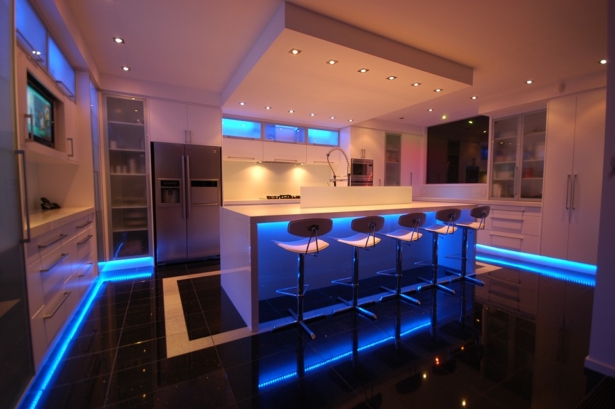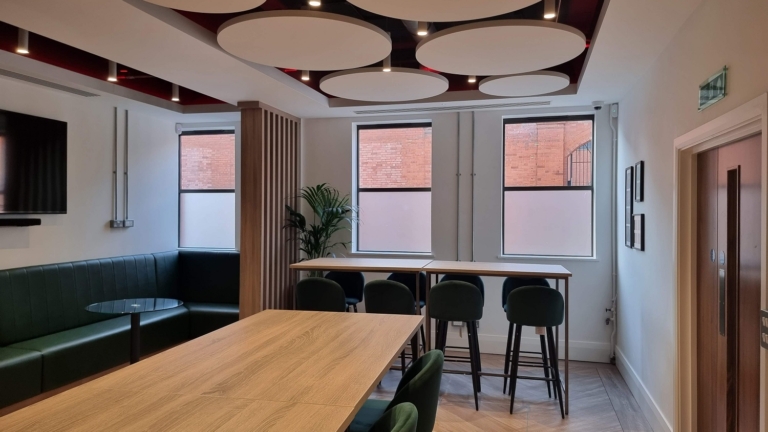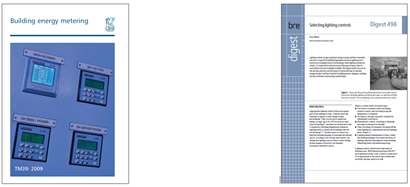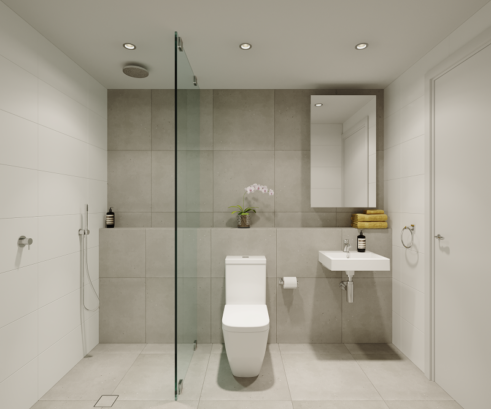
See how much you could save on energy costs with our easy-to-use LED Energy Calculator.
Open Energy CalculatorWe design and manufacture an extensive range of luminaires for a diverse number of sectors and applications. Whatever the shape, purpose or style of your space, we have a lighting solution.
View all sectors & applicationsView our latest product, OCTO smart lighting and application sector brochures.
Download our BrochuresFind information regarding our product warranty, product data downloads and FAQs regarding lighting and technical terms. Here you will find support with training CPDs as well as useful lighting design and LED strip calculators.
View the Energy CalculatorOCTO delivers the complete smart lighting package to transform the efficiency and ambience of commercial and residential spaces.
Download the BrochureFind product warranty details, data downloads, and lighting FAQs. Access training CPDs plus handy lighting design, energy and LED strip calculators—all in one place.
View the Energy CalculatorLighting legislation, building regulations – England

The latest version of the Building Regulations 2010 for use in England was published on the 15th of December 2021, in two separate documents of the Approved Document L on the Conservation of Fuel and Power, with Volume 1 being for Dwellings and Volume 2 being for Buildings other than dwellings. Subsequently the Department for Levelling Up Housing & Communities (DLUHC) published on the 24th of February 2022, a notice of revision to the 2021 edition of the Building Regulations Approved Documents L1 & L2, where revisions were approved under Section 6 of the Building Act 1984, with an amended version then being made available on the GOV.UK website.

The Building Regulations 2010, Approved Document L on the Conservation of Fuel and Power, for both Volume 1 and Volume 2 take effect on 15th of June 2022 for use in England, where these documents do not apply to work subject to a building notice, full plans application or initial notice which has been submitted prior to that date, provided the work is started on site before 15th of June 2023.
The requirements for both documents relate to the fixed building services energy efficiency and controls, where it states that reasonable provision shall be made for the conservation of fuel and power in buildings by providing fixed building services which are energy efficient to a reasonable standard, have effective controls and are commissioned by testing and adjustment to ensure they use no more fuel and power than is reasonable in the circumstances.
For Volume 1 (Dwellings), any fixed lighting should achieve lighting levels appropriate to the activity in the space and spaces should not be over-illuminated where in many cases, it is likely that householders will be able to choose the lamp installed in the individual space.
For each internal light fitting installed into a new or existing dwelling, they should have lamps with a minimum luminous efficacy of 75 light source lumens per circuit-watt and should have local controls to allow for the separate control of lighting in each space or zone, where controls may be manual, automatic or a combination of both.
For each external light fitting installed in a new or existing dwelling, they should have both automatic controls which switch luminaires off in response to daylight and if luminous efficacy is 75 light source lumens per circuit-watt or less, automatic controls which switch luminaires off after the area being lit becomes unoccupied, however if luminous efficacy is greater than 75 light source lumens per circuit-watt, then manual control is acceptable.
Where a building automation and control system is installed, it should have appropriate control capabilities for the dwelling, based on the type of building, alongside its expected use and potential energy savings and it should be specified and installed according to the manufacturer’s instructions to ensure that its overall performance meets a reasonable standard, however for large or complex buildings, the guidance contained within Volume 2, should be followed.
For Volume 2 (Buildings other than dwellings), any fixed lighting should achieve levels of illumination appropriate to the activity in the space and should not be over-illuminated with lighting designed based on CIBSE’s SLL Lighting Handbook or an equivalent design guide, but for smaller spaces where total lighting power is likely to be low, such as in toilets or storerooms, there is no expectation that lighting calculations should be produced.
General lighting should observe the criteria in having either, an average luminaire efficacy of 95 luminaire lumens per circuit-watt or is to meet the requirements of the Lighting Energy Numeric Indicator (LENI) method.
Display lighting should observe any of the following in either having an average light source efficacy of 80 light source lumens per circuit-watt, have a rated power usage no greater than 0.3W/m2 within each space or meet the LENI method.
For high excitation purity light sources, an average light source efficacy of 65 light source lumens per circuit-watt.
This approved document does not include minimum standards for specialist lighting, such as theatrical spotlights, stage lighting, gobo projectors or wall-washers.
General lighting and display lighting should be metered by one of the following methods, being either on dedicated lighting circuits with a kWh meter for each circuit, or by a local power meter coupled to or integrated in the lighting controllers of a lighting management system, or by a lighting management system that can both, calculate the consumed energy and make this information available to a building management system.
Lighting controls used in new and existing buildings should follow the guidance contained within BRE Digest 498, where unoccupied spaces should have automatic controls to turn the general lighting off when the space is not in use, as in that of presence detection, and occupied spaces should have automatic controls where suitable for the use of the space.
General lighting in occupied spaces should have daylight controls, such as photo-switching and dimming for parts of the space which are likely to receive high levels of natural light. Display lighting should be controlled on dedicated circuits that can be switched separately from those providing general illuminance.

Within Appendix D, relating to measures for consequential improvements, where, for an existing building with a total useful floor area of over 1000m2, additional work may be required to improve the overall energy efficiency of the building if the proposed work consists of, or includes either an extension, or providing any fixed building service in the building for the first time or increasing the capacity of any fixed building service, with additional works to improve the energy efficiency, as required in these circumstances, being known as consequential improvements.
Energy efficiency improvements to the building are required whenever consequential improvements apply where all technically, functionally, and economically feasible measures should be implemented in normal circumstances, and should be installed at least to the extent outlined to meet the reasonable provision criterion by upgrading the general lighting systems that have an average lamp efficacy of less than 60 light source lumens per circuit-watt and that serve areas greater than 100m2 by providing new luminaires and/or controls following the guidance contained within this document, alongside installing energy metering following the guidance given within CIBSE TM39.
Additional energy efficiency measures usually to be installed, because of either the provision of a fixed building service in the building for the first time or increasing the capacity of an existing fixed building service, where any general lighting system within the area served by the relevant fixed building service has an average efficacy of less than 60 light source lumens per circuit-watt, it should be upgraded with new luminaires and/or controls to meet the requirement of this document.
In concluding, the above information relates to England only, with the other devolved nations of the UK working separately in a consultation and implementation process for the building regulations in respect of the conservation of fuel and power.
You Might Also Be Interested In...

